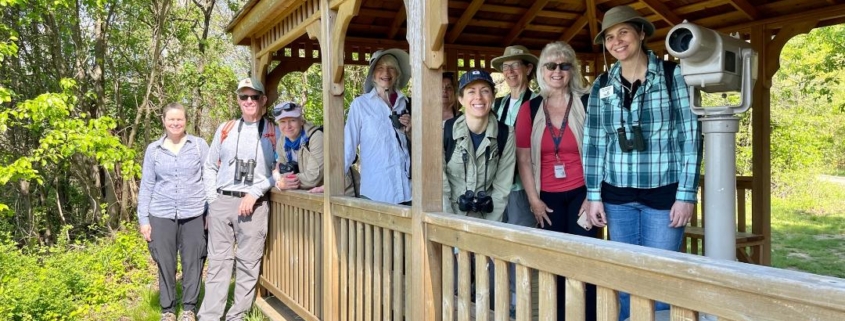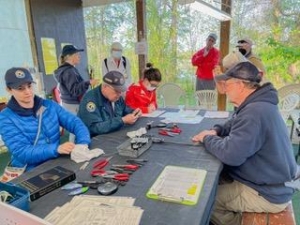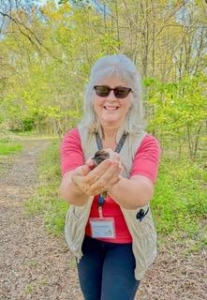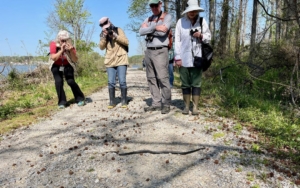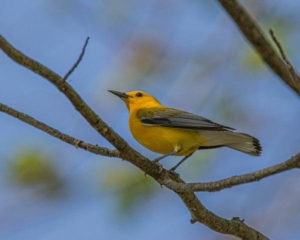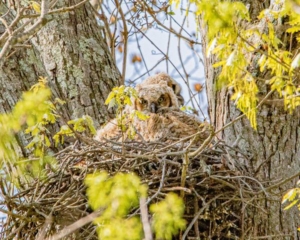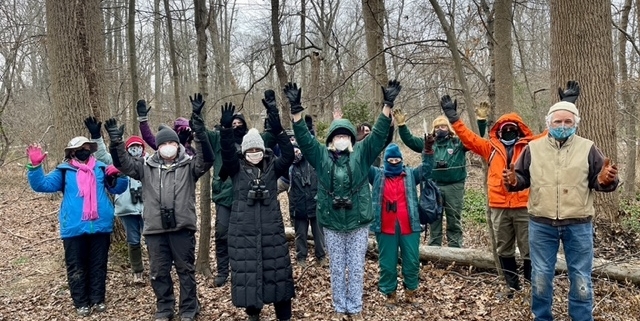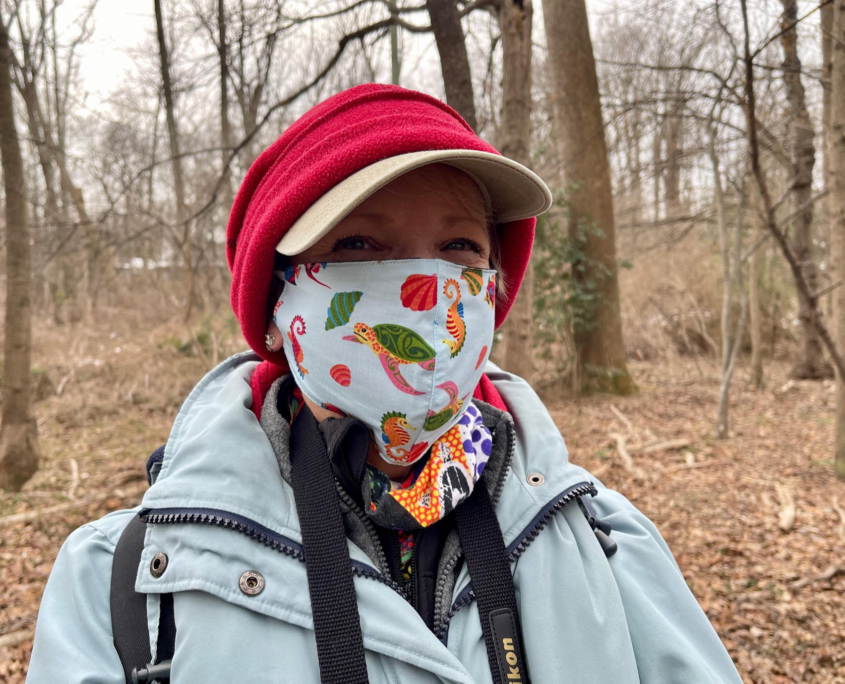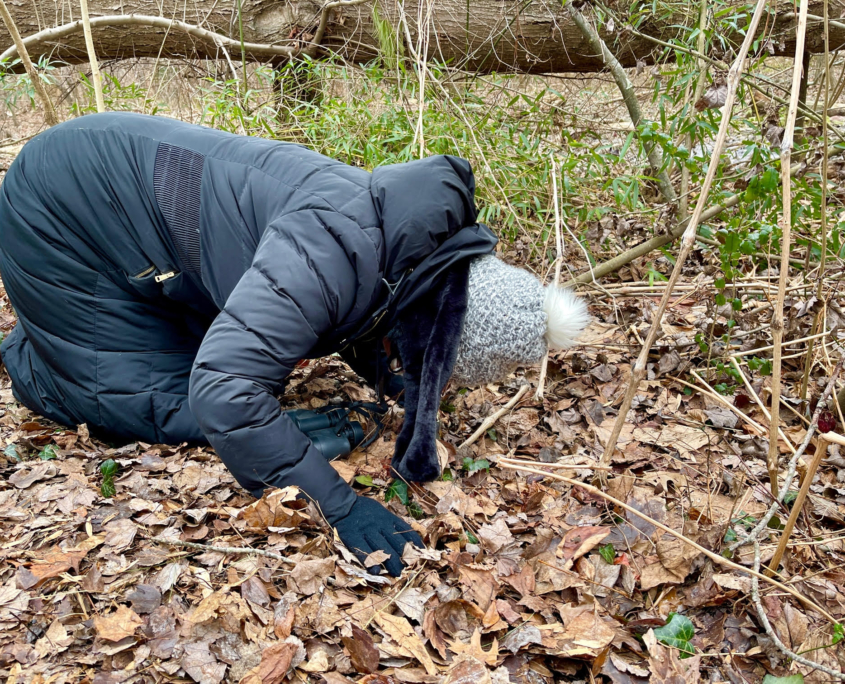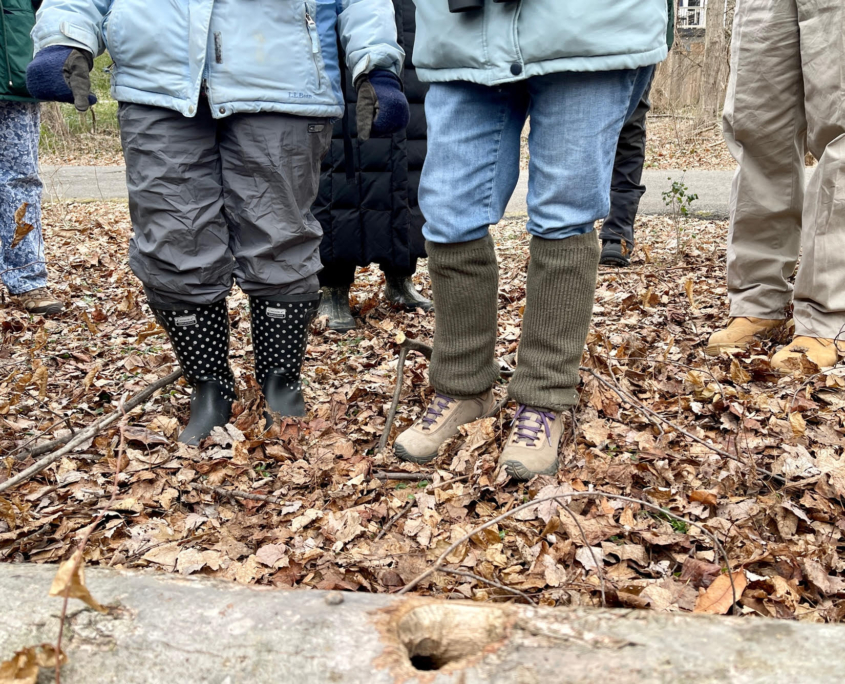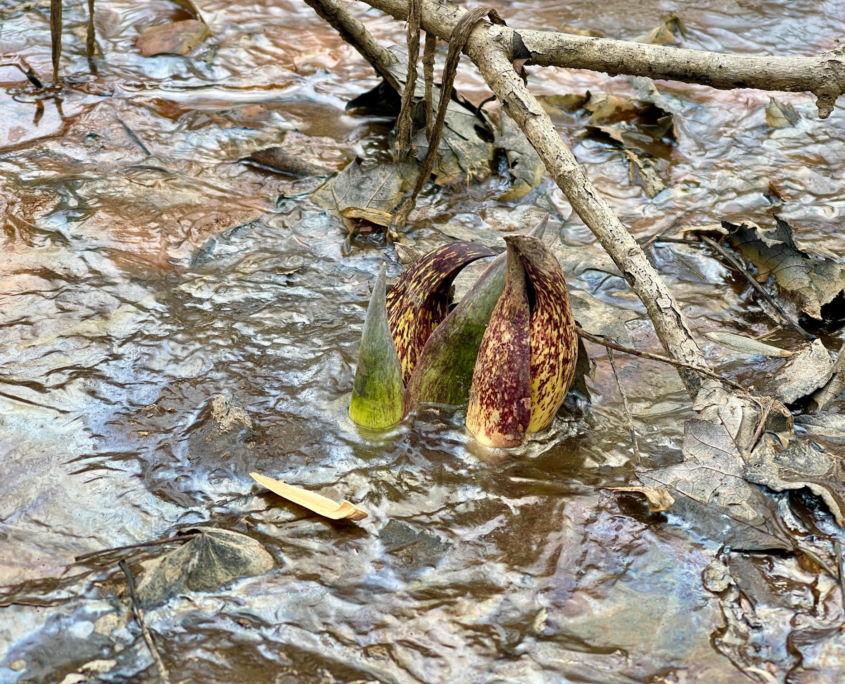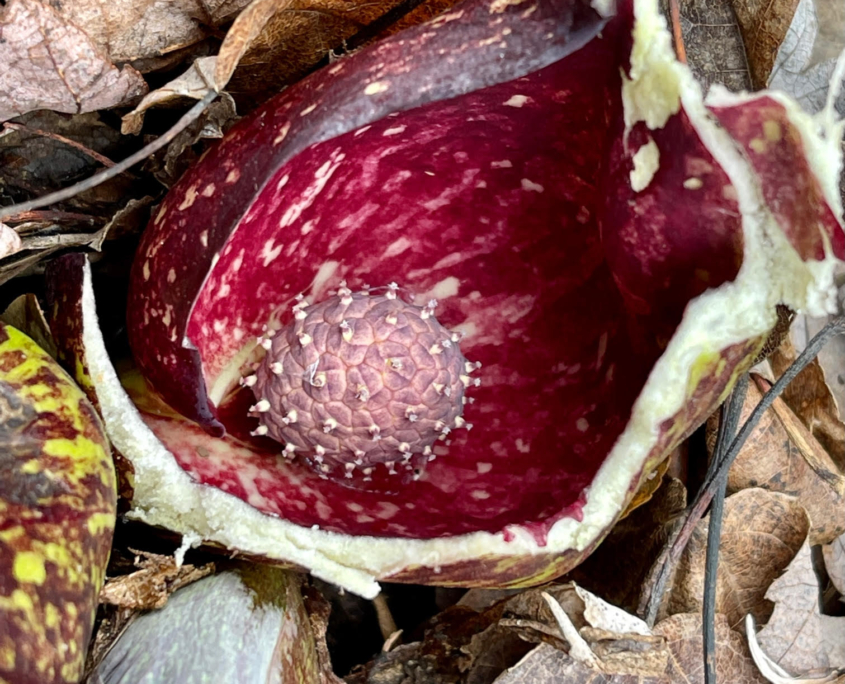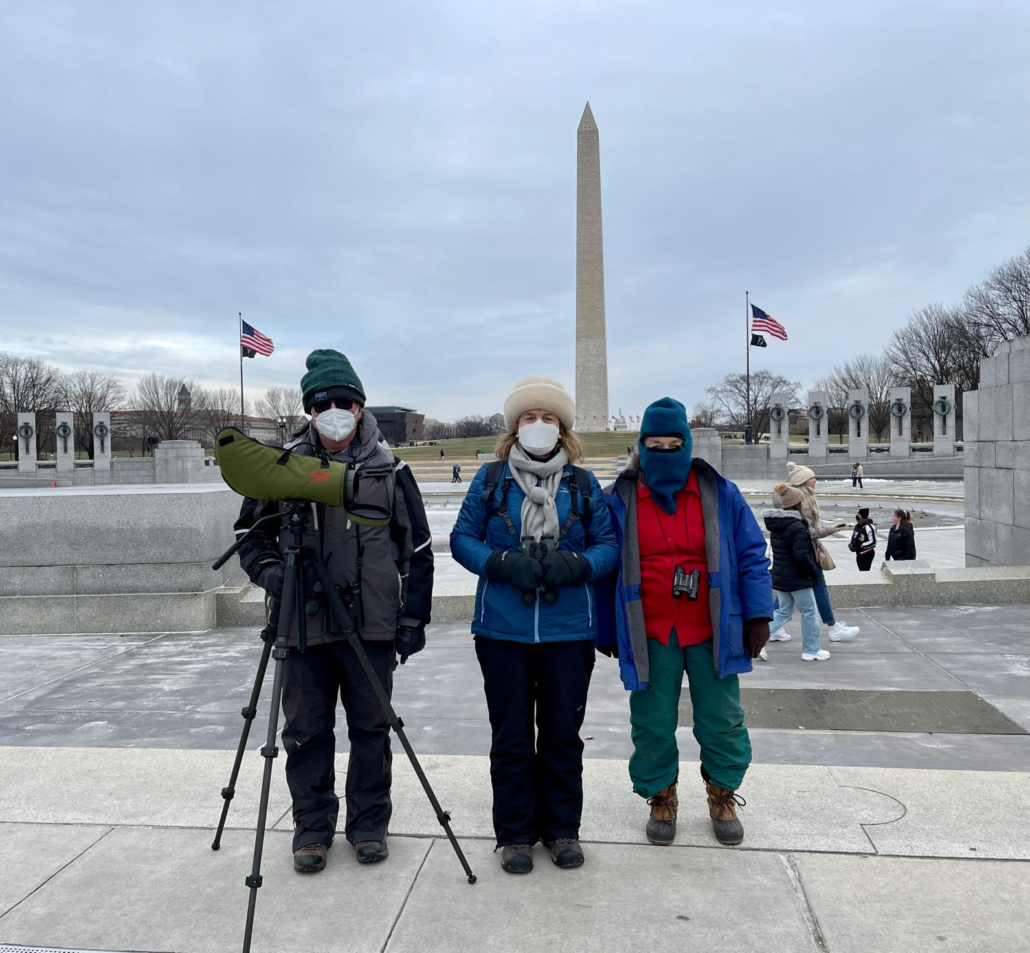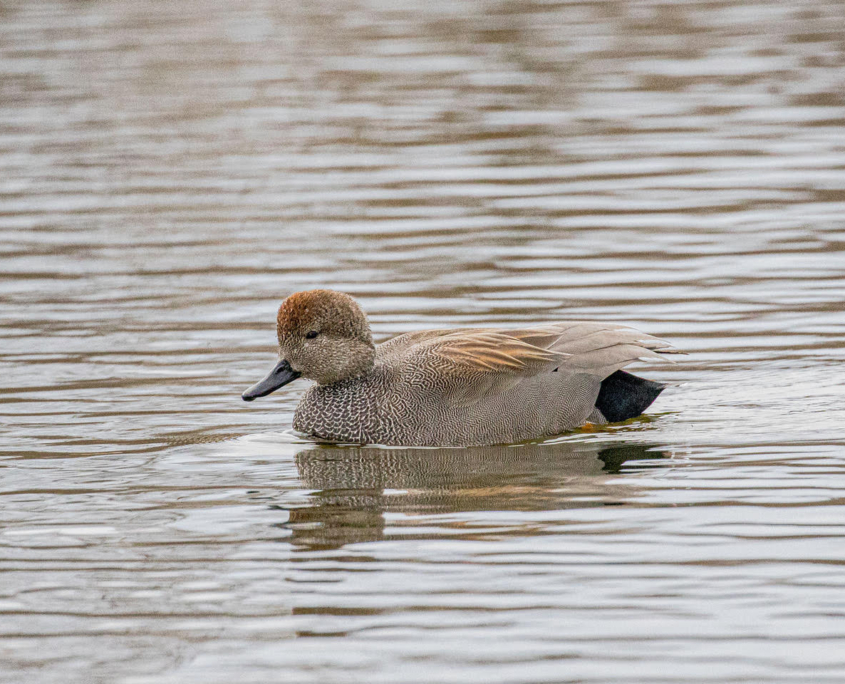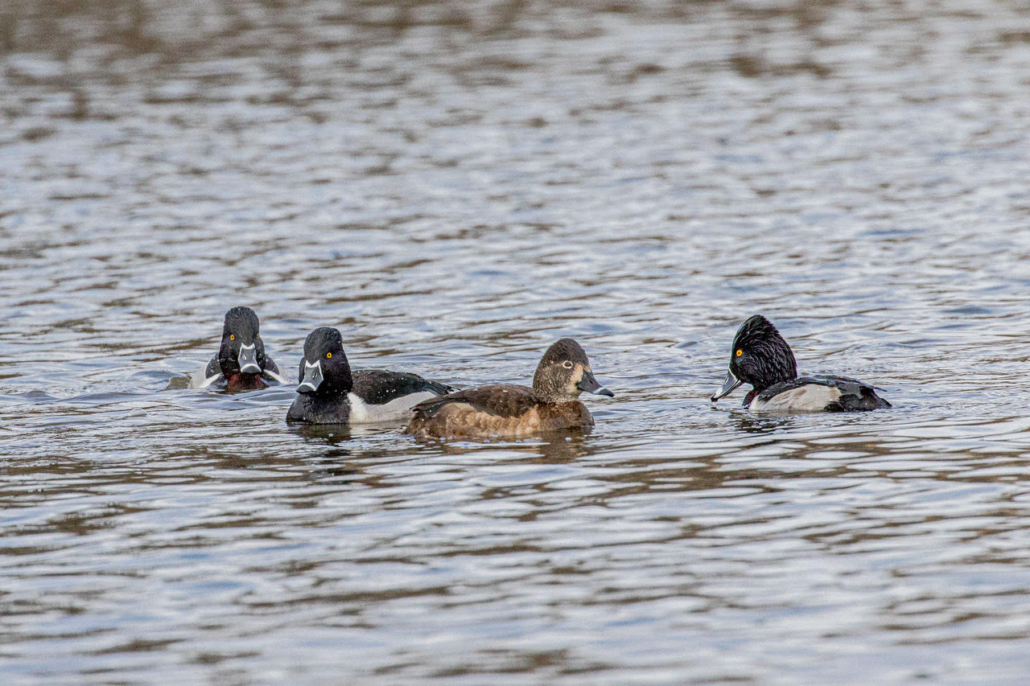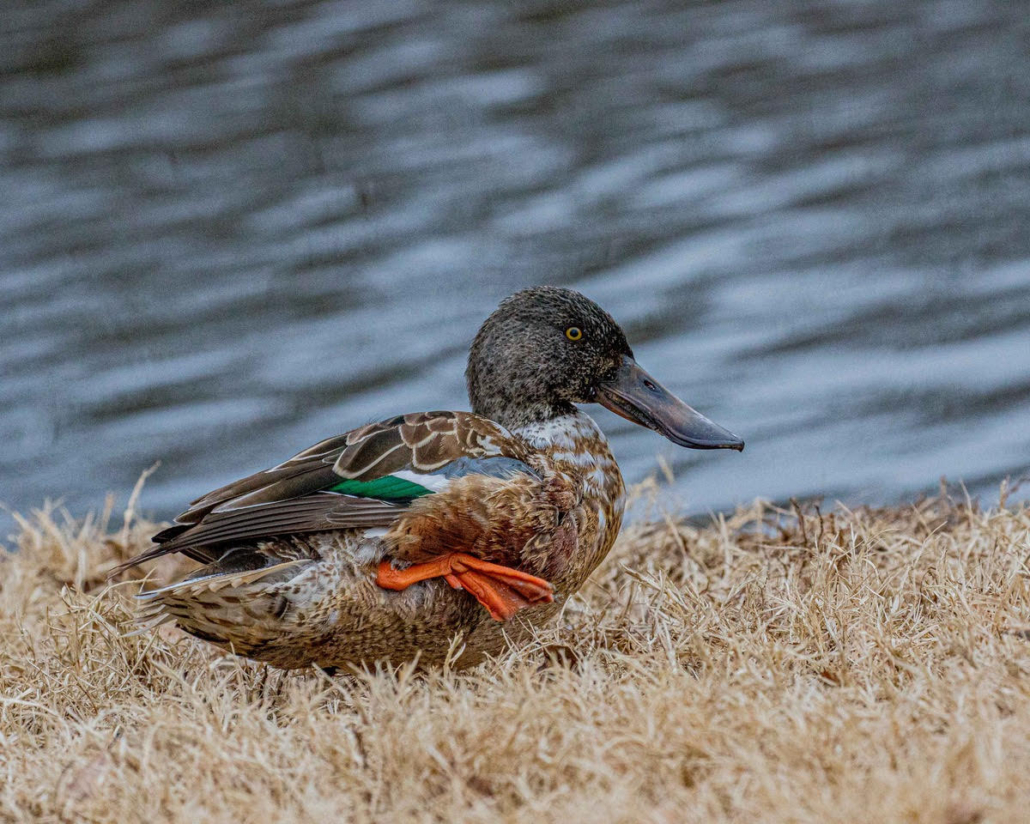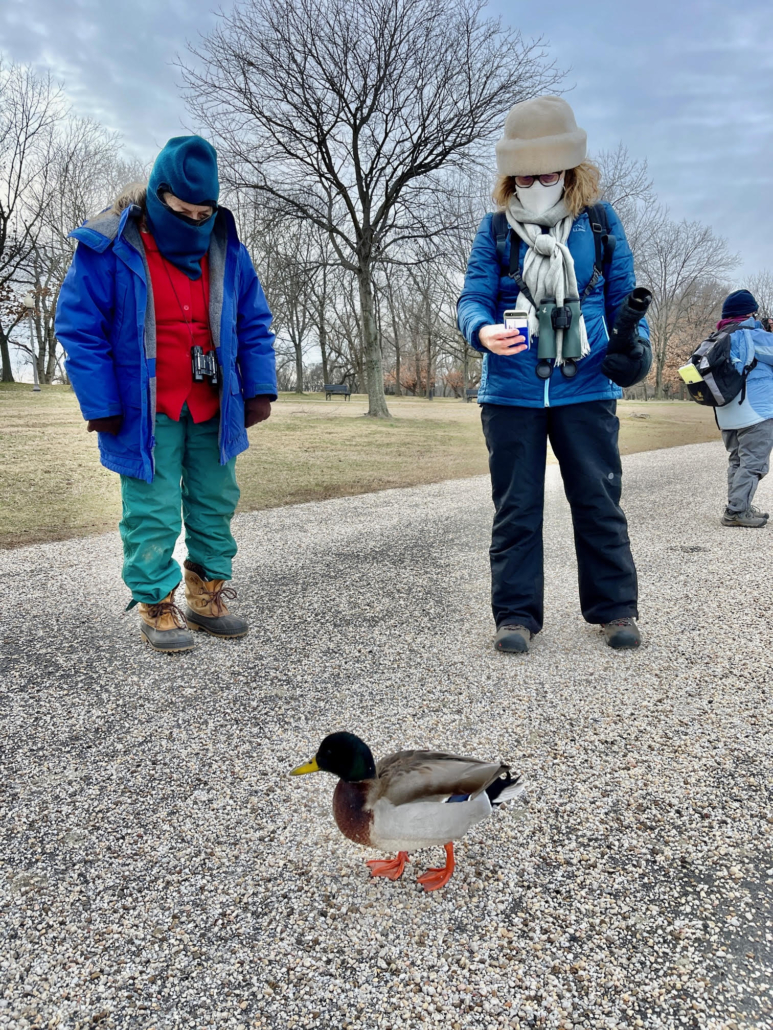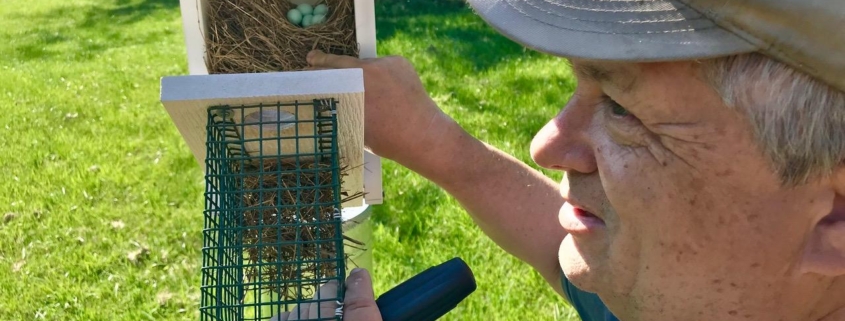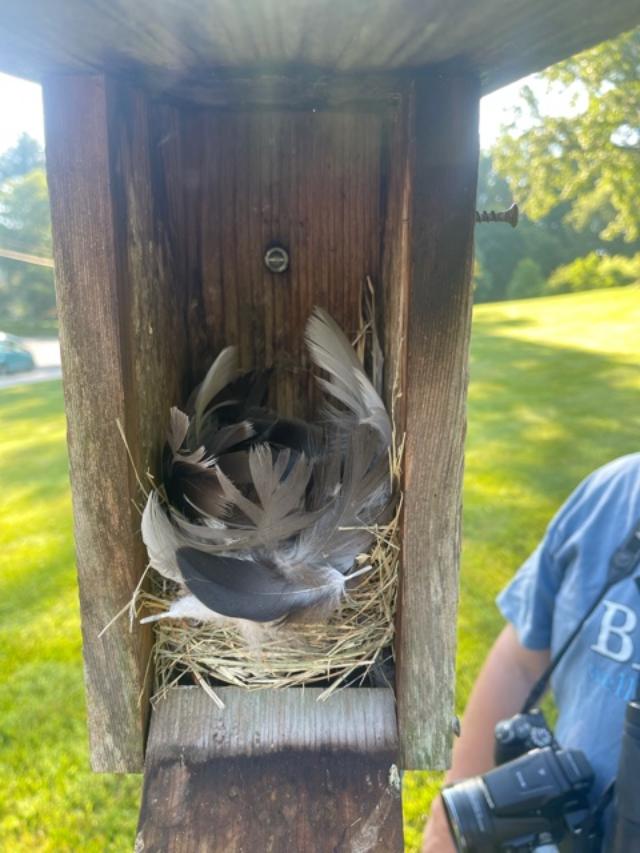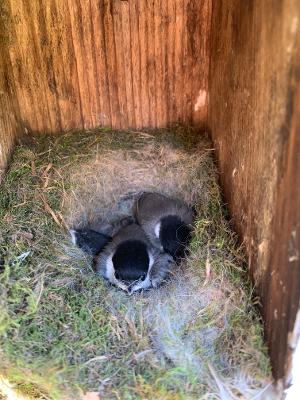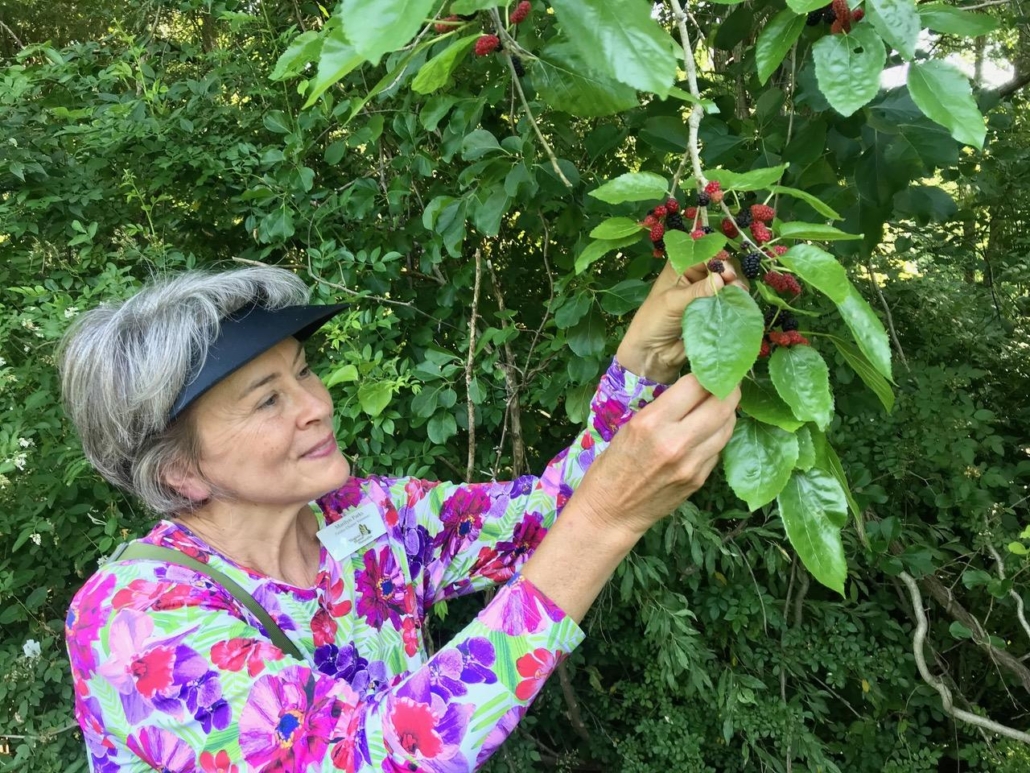FMN CE Hike: Herp Hunt on June 26th
Article and photos by FMN Barbara Saffir except as noted
Orange turtles, slinky snakes, and shy salamanders were the highlight and delight of FMN’s first-ever continuing education “Herp Hunt” hike on June 26, 2022.
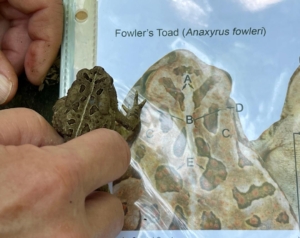
Identifying Fowler’s toad

Pickerel frog, photo Bob Macke
Thirteen enthusiastic FMNers (including some board members) attended the three-hour hike at Hemlock Overlook Regional Park, including FMN event coordinator, Barbara Saffir, who co-led the hike with two experts (and an assistant expert) from the Virginia Herpetological Society.
Caroline Seitz led one group, taking the “high road” through the hilly park, so to speak. She’s VHS’s education chair. VHS’s Mark Khosravi, a science teacher who was recently quoted in the Washington Post discussing venomous copperheads, and his assistant led his hikers on the lower trail. Both groups “herped” upland wooded areas and lower stretches along the Bull Run stream.
Among their discoveries were: SNAKES (a small ring-necked snake, a queen snake that repeatedly posed in the stream, adult and immature
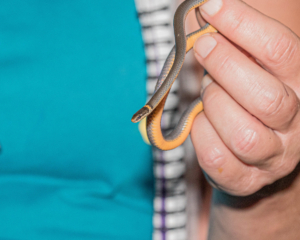
Ring-necked snake
northern watersnakes, and an eastern worm snake); TURTLES (several male and female woodland box turtles, a red-bellied slider turtle, a painted turtle, and broken turtle eggs); FROGS/TOADS (pickerel frog, adult and baby green frogs, baby wood frog, and Fowler’s toads); and SALAMANDERS/SKINKS (a red-spotted newt, a northern two-lined salamander, a long-tailed salamander, and five-lined skinks).
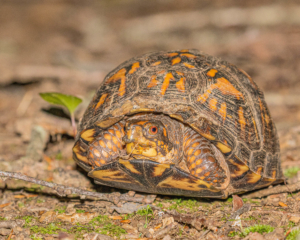
Woodland box turtle
FMNers even learned how to differentiate male from female box turtles and American toads from Fowler’s toads. A five-lined skink hopped aboard board member Amy Stulman, who handled the opportunity with a smile. Debbie McDonald spied the first herp of the day on Seitz’s hike, a precious woodland box turtle. We learned to report box turtle sightings to VHS online.
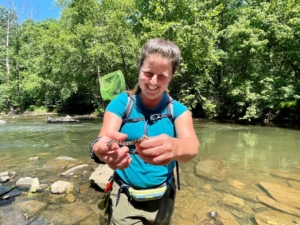
Co-leader Caroline Seitz shows us a juvenile Northern Watersnake
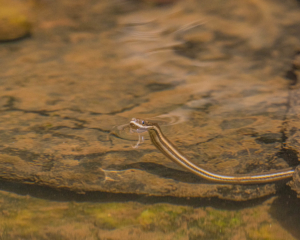
Queen snake practically performed for us for a while



